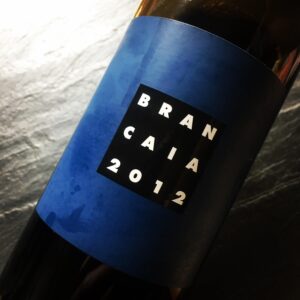Like so many New World winemakers, Barbara Widmer’s childhood landscape wasn’t shaped by a life amongst the vines. Her parent’s journey into winemaking began, more or less, as a hobby that stemmed from the purchase of an abandoned hillside Castellina named Brancaia.
“I grew up in Zurich; I had no ambition or dream to move to Tuscany,” Widmer confessed in a recent interview. “My parents encouraged me to become Brancaia’s winemaker, but I was totally against it.” Instead, she studied architecture and soon found that the discipline demanded compromise, “I loved the design process, but I also started to realize that you have to understand the taste of other people. You have to accommodate other peoples’ style, and I’m bad at doing things that are not to my taste.”
Charting a new course, she spent a year working for a winery in Switzerland before enrolling at the Swiss Institute for Life Sciences in Wädenswil. Studying enology and viticulture in a cool climate has graced her with a lighter touch and an appreciation for balanced acidity. “Working in a marginal climate is much more difficult,” she admits. “It teaches you to be careful, to be aware that there is no guarantee that you’ll achieve the perfect ripeness every year. I love whites from Northern Italy—they’re are very fresh, very crisp. Normally when we start to pick the grapes at Brancaia, most Italians are still at the beach!”
“We cool our grapes down in the cellar; we pick only in the morning hours. We even start fermentation at lower temperatures, especially with Maremma fruit, we want to preserve nice fruit flavors. Acidity is important, but for flavor development, temperature has a really big impact.”
It is through this lens—the lens of an outsider with a designer’s bent—that Widmer has harnessed both New and Old World winemaking techniques, artfully blending Brancaia’s three estate vineyards into distinctive wines that capture freshness and modernity while retaining their Tuscan pedigree.
Widmer finds the contours of her wines by blending Sangiovese with international varieties like Cabernet Sauvignon, Cabernet Franc, Merlot, and Petit Verdot from different blocks. All of the fruit is sourced from south or southwest facing hillsides richly layered in a combination of loam, sand, silt, and clay soils. Soaring to nearly 1,400 feet above sea level, Poppi Vineyard enjoys a continental climate in the Radda area of Chianti, while Brancaia sits at a somewhat lower elevation. Maremma Vineyard, the warmest of the three sites, is just a few miles from the Mediterranean’s sparkling azure coastline.
“We somehow believe that every block we have can be brought into perfect harmony, and no block is treated as an entry-level block. That’s the work we do outside. Most of our blocks are on hillsides, and the bottom can ripen differently than the top. We typically have different picking dates. We process each of those blocks separately. I can really taste differences in each block two months before bottling. It’s interesting, but it helps us to understand how we can improve each year.”
Widmer’s Tre is a stylish Super Tuscan blend of 80% Sangiovese, 10% Merlot, and 10% Cabernet Sauvignon from all three of the winery’s estate vineyards. It’s softly textured on the nose and palate, layered in fragrant, sun-warmed Italian plums and black cherries infused with thyme blossoms. In the mouth, it’s plush and generous with supple tannins and a core of juicy black fruit.

Il Blu is a blend of 50% Sangiovese, 45% Merlot, 5% Cabernet Sauvignon from the Brancaia Estate and Poppi Vineyard. “If you want Sangiovese to be complex and elegant, it helps to blend it with other grapes. Cabernet, Merlot, Petit Verdot all require different wood management than Sangiovese. For that reason, we ferment and age varieties separately until the end—I love following single lots as maturation progresses to see if there is something I can change or improve.”
Il Blu contains within its DNA the blueprint of a classic Tuscan wine—in it, one can find earthiness and forthright acidity framed in well-integrated oak. From there it departs, flirting with opulence, a sumptuous melange of blueberries, black cherries, and plums followed by crushed lavender, cedar, and a beguiling top note of Madagascar cinnamon, Il Blu has longevity in its bones. Its counterpart, Illatraia, does too. It’s a Cab-dominant blend named after Brancaia’s hillside vineyard in Maremma that quietly unspools with notes of plums, black currants, and ripe blackberries steeped in dried herbs. Burning embers, dust, and juniper berries add layered complexity. On the palate, it’s round and plush, with mouth-coating tannins and bright acidity that ebb and flow in a core of juicy dark fruit.
“Winemaking is very much about life,” says Widmer. “It teaches you that nature is much bigger than you are. Probably, the more you understand those things, the better your product will be.” In recent years the winery’s vineyard team has been taking steps to adopt organic methods of farming, and within the next two years the all the estate vineyards will be certified organic. It’s evident that the team’s hard work is paying off—over 90 of her wines have been garnered 90+ point scores in the last decade. For Widmer, the blends she creates truly are the best of both worlds.
